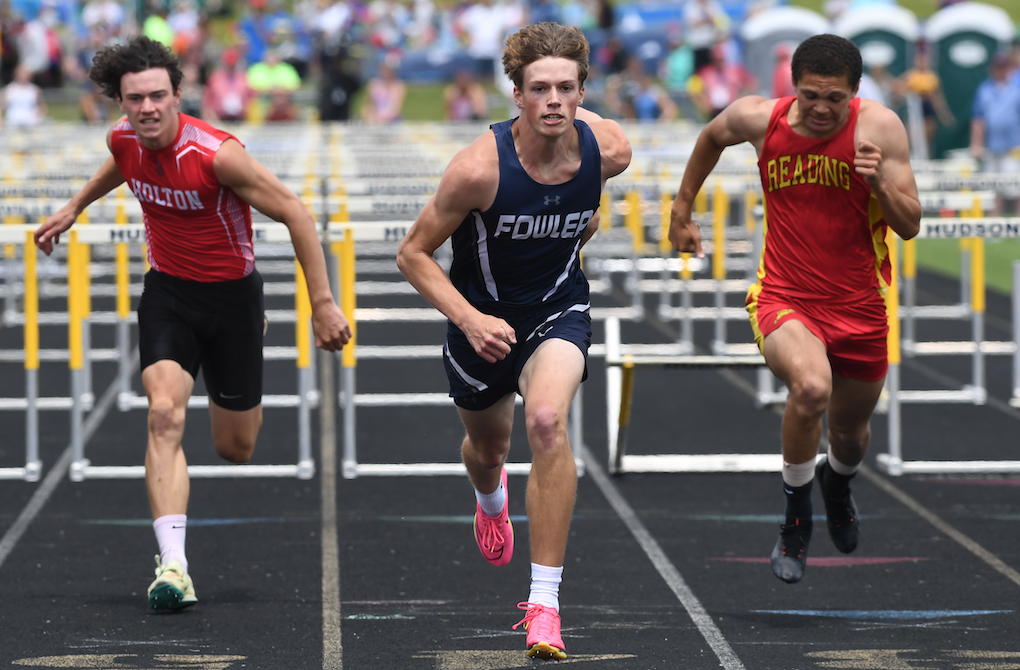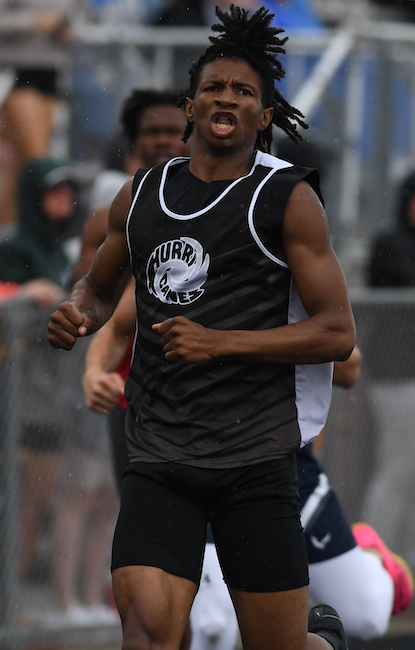
Classes Still Create Hoosier Hysteria
July 27, 2017
By Rob Kaminski
MHSAA benchmarks editor
This is the fourth part in a series on MHSAA tournament classification, past and present, that will be published over the next two weeks. This series originally ran in this spring's edition of MHSAA benchmarks.
Twenty years ago, Bloomington North High School won the Indiana High School Athletic Association boys basketball championship, defeating Delta 75-54 at the RCA Dome in Indianapolis.
The date, March 22, 1997, is at the same time revered and disdained by traditionalists in the state who saw it as the last schoolboy championship game the state would ever host.
That’s how devout the game of basketball, particularly interscholastic basketball, had become in the Hoosier state during the 87 years a state champion – one state champion, to be precise – was crowned.
Following that 1997 season, the IHSAA moved to a four-class system for its roundball tournaments, like so many of its state association counterparts had done years earlier.
It would be shocking to find more than a small percentage of current high school basketball players around the country unfamiliar with the iconic movie Hoosiers, even though the film is now more than 30 years old.
And, the storyline for that blockbuster unfolded more than 30 years prior to its release, when small-town, undermanned Milan High School defeated Muncie Central High School 32-30 in the 1954 IHSAA title game.
Perhaps it’s because of the David vs Goliath notion, or the fame of the movie that replaced Milan with the fictional Hickory and real-life star Bobby Plump with Hollywood hero Jimmy Chitwood, or the simple fact that Indiana had something other states didn’t.
Whatever the reason, plenty of opposition remains to this day to basketball classification in the state.
The fact is, the small rural schools were regularly being beaten handily by the much larger suburban and city schools as the tournament progressed each season.
Small schools also were closing at a rapid rate following the state’s School Reorganization Act in 1959, as students converged on larger, centralized county schools. From 1960 to 2000, the number of schools entering the tournament dropped from 694 to 381, and in 1997 a total of 382 schools and 4,584 athletes began competition at the Sectional level (the first level of the IHSAA Basketball Tournament).
It was at the entry level of the tournament where school administrators felt the pain of the new class system, but not necessarily for the same nostalgic reasons as the fans who either attended or boycotted the tournament.
At the Sectional round of the tournament, the IHSAA was culling just 2 percent of the revenue, with the participating schools splitting the balance. So, when Sectional attendance dropped by 14 percent in that first year of class basketball, many schools realized a financial loss. It was money they had grown to count on in prior years to help fund various aspects of the department.
Schools cumulatively received more than $900,000 from Sectional competition in 1998, but that total was down from more than $1 million in the last year of the single-class tournament.
Yet, the current format provides a great deal more opportunity and realistic chances at championship runs for schools of all enrollments.
To date, 60 additional teams have championship or runner-up trophies on display in school trophy cases around Indiana.
That was the mission in front of then-IHSAA commissioner Bob Gardner (now National Federation executive director) once the board made its decision: to give thousands more student-athletes the opportunity for once-in-a-lifetime experiences.
As any statistician knows, figures can be manipulated to tell any side of a story. Declining attendance in year one of class basketball is such a number.
The truth is tournament attendance had been on a steady downward spiral since its peak of just over 1.5 million in 1962. By the last single-class event in 1997, the total attendance was half that.
The challenge then and today, as it is for all state associations, is to find that delicate balance for those holding onto tradition, those holding onto trophies, and the number of trophies to hand out.
Editor’s Note: Stories from the Fort Wayne Journal Gazette in 1998 and from a 2007 issue of Indianapolis Monthly provided facts in this article.

Fowler Boys Clinch 1st Team Title since 1988, Buford Leaps Into Record Book
By
Keith Dunlap
Special for MHSAA.com
June 2, 2024
HUDSONVILLE — In 2023, Anthony Buford of Detroit Frederick Douglass would have won the long jump at the MHSAA Lower Peninsula Division 4 Track & Field Finals if not for a historic effort.
Buford nearly was first, but had to settle for second after Peck’s Alex Affer jumped a meet-record distance of 23-feet, 1.5-inches.
Affer graduated last year, but he still was providing Buford plenty of motivation when he started the long jump event at this year’s event.
“My main motivator all year has been my main guy Alex Affer, the former record holder at 23-1,” Buford said. “He was really anticipating me breaking his record this year.”
Buford made good on Affer’s proclamation by setting a new Division 4 Finals record, jumping a recorded distance of 23 feet, 2 inches, into a headwind to best what Affer achieved a year ago.
“I was really surprised I broke it with that headwind I was jumping into,” Buford said. “But honestly, I just had to make it happen.”
Oh, but Buford wasn’t done during his busy and successful day.
Buford then won the 400 dash, finishing first in a time of 49.91 in a headwind and with rain coming down.
“I’ve been fighting to beat 49 (seconds) all season,” said Buford, who decided to focus on the 400 meters and long jump this year after primarily competing in the 100 and 200-meter dashes last year. “Just to come out here and beat my time while it was raining and a headwind coming into my face, that really shows how much more mentally tough I’ve gotten over time.”
 Buford was also second to teammate Adrian Smith in the 200 and ran in the 1,600 relay to help Douglass finish second on the day.
Buford was also second to teammate Adrian Smith in the 200 and ran in the 1,600 relay to help Douglass finish second on the day.
Buford’s performance wasn’t quite enough to lift his team past Fowler, which captured the team title with 56.5 points, four more than Douglass. It was Fowler’s first Finals team championship since 1988.
Brady Feldpausch led Fowler’s point scoring by finishing first in the 110 hurdles with a time of 14.57, running as part of the winning team in the 800 relay, taking second in the 300 hurdles and then being a part of the winning 1,600 relay that clinched the title.
“It feels amazing,” Feldpausch said. “I don’t know what to say. We just all have the same mindset. We come to practice and work hard. We knew if we all ran like we knew how to, we’d have a shot.”
Fowler entered the last event, the 1,600 relay, knowing that in order to clinch the team win it had to win the race and have Douglass finish fifth or lower.
A strong event all year for the Eagles, they delivered again, winning in a time of 3:26.43. Pair that with a ninth-place finish by Douglass, and Fowler had what it needed.
Fowler head coach Brett Schafer credited unsung heroes with stepping up for his team and fulfilling a goal talked about all year.
“We scored in field events where we didn’t expect to,” he said. “Our first meeting with them at the start of the year, our whole goal was to hang a banner in the gym. We did that today.”
Kalamazoo Hackett Catholic Prep took third with 44 points after winning the last two LPD4 team titles.
PHOTOS (Top) Fowler’s Brady Feldpausch, left, edges Reading’s Tayshawn Bester to win the 110 hurdles Saturday at Baldwin Middle School. (Middle) Detroit Douglass’ Anthony Buford finishes his win in the 400. (Click for more from Ken Swart/RunMichigan.com.)

